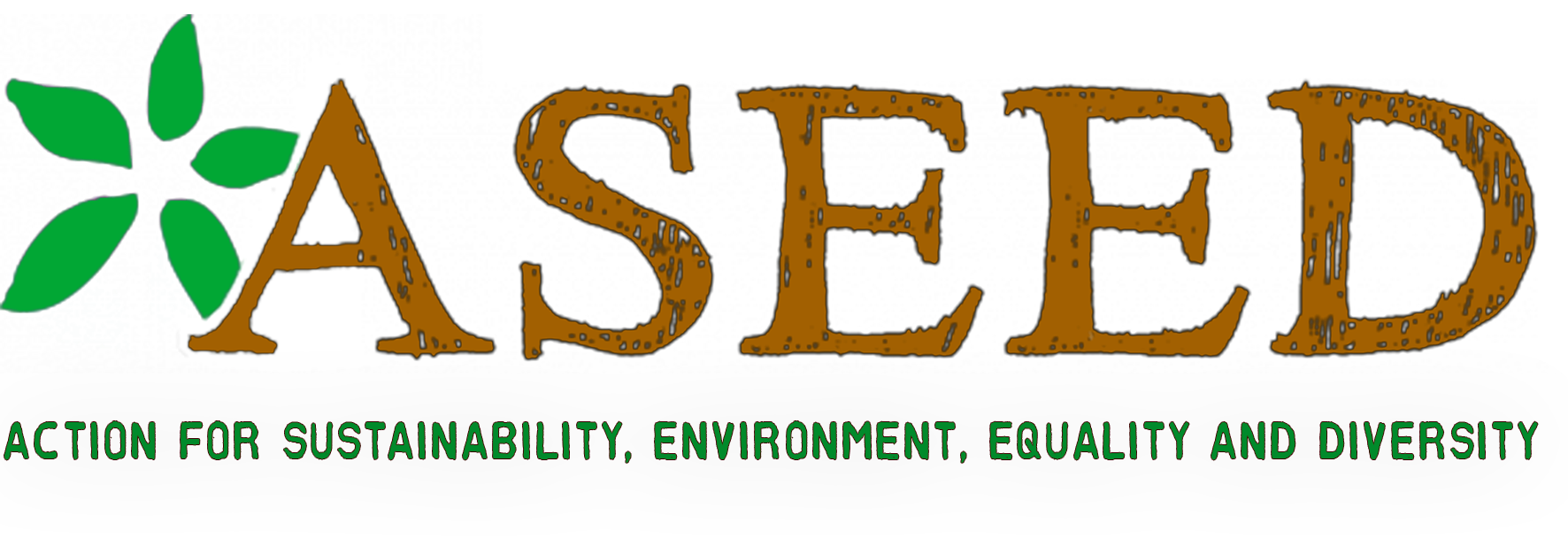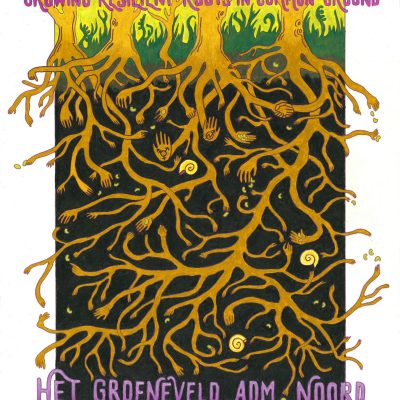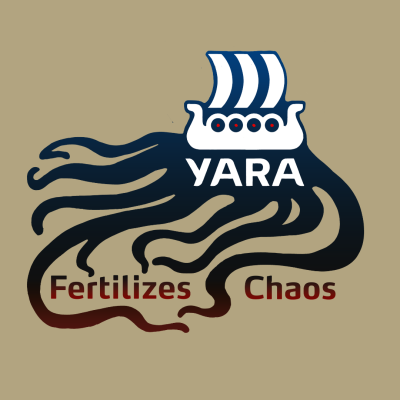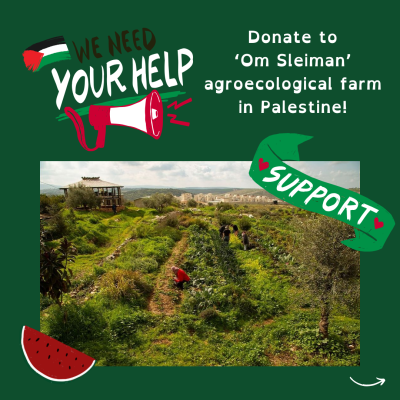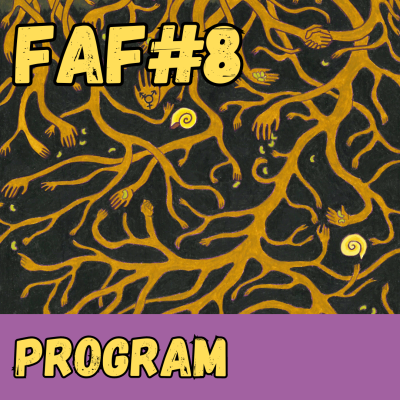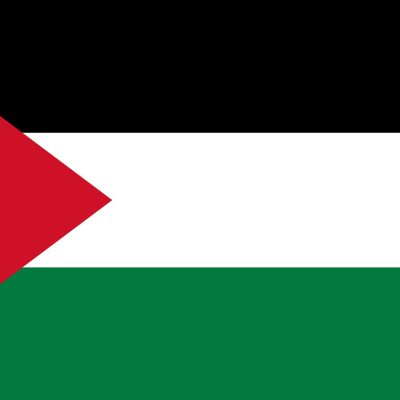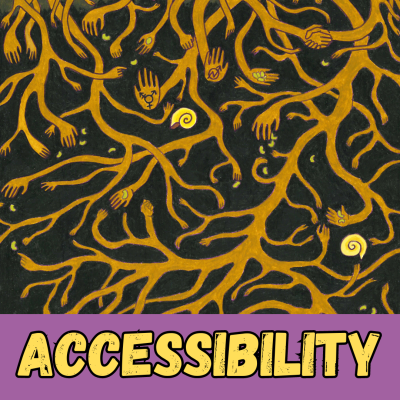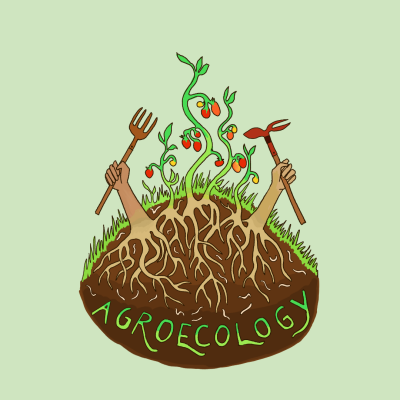How does the Ukrainian war impacts industrial food systems and food security?
The abrupt stop of the export of wheat, corn, and sunflower oil – the most significant products in global trade coming out of the Black Sea region – has raised concerns about the availability and access to these foods which are staples for many’s diets.
In light of the Russian invasion of Ukraine, the European Parliament has redacted a motion for a resolution on the need for an urgent EU action plan to ensure food security.
Through the lines of this document, two concepts are emphasized: food security and food sovereignty. Presented as the goal and the means to achieve it.
To do so, the commission intends to sacrifice Farm to Fork and Biodiversity strategies, regarded as a constraint on the productive capacity. This approach has raised some concerns, as it promotes a false dichotomy between food security and the sustainability of food systems.
What we are witnessing is a textbook example of ‘the shock doctrine‘ pushing neo-liberal economic policies to cope with uncertainties. Taking advantage of the shock of the war, industrial lobbies and conservative political groups such as the EPP have used the situation to bend laws and reforms to their favor. In a recent statement addressed to the EU commission, Copa Cogeca claimed that ‘exceptional situations call for exceptional measures.
The EU Food Policy Coalition, embracing 90 civil society organizations, reacted to the motions of the European Commission with an open letter, pointing out the incongruences of this document: subtly promoting corporate interests while distancing the real solution.
By looking closer at the spike in food prices and the flow of food supplies from the countries at war, we can better understand how the mainstream narrative has instrumentalized the Ukrainian crisis.
In this article, we will investigate the two main narratives that have been resonating in mainstream media: the threat to European food security and the need to increase European production through food sovereignty.
,,FoOd SeCuRiTy”
First of all, we need to ask whether European food security is actually so dependent on the wheat and grain from eastern Europe for its food security. It seems to be more complex than that.
Indeed, it is not accurate to say that Russia and Ukraine are the breadbaskets of Europe, as some media have been reporting.
So don’t worry, you will still be able to spread the hummus on your tosti in the foreseeable future.
Instead, it is countries in the Middle East and North Africa- which import from 40 to 95% of their food from Russian and Ukrainian production- that are more vulnerable to food insecurity. Europe, on the other hand, mainly depends on Canada: the first exporter for the import of grain, though Canada’s grain production has fallen dramatically due to droughts.
European food security is not directly dependent on grain coming from the countries at war to feed its population. Further scrutiny of the supply and demand behind the alarming threats to food security shows that Europe is mostly dependent on the black sea’s countries when it comes to fertilizers, fossil energy, and proteic livestock feed.
Secondly, we should make clarity about the rise in food prices.
Overall, the conflict in Ukraine does have heavy consequences on our food systems: disrupting commercial flows and routes. However, it is not the direct cause of the steep increase in prices. Indeed, the conflict is only one of the causes behind the spike in food prices.
A recent report from the Italian institute ISMEA (Istituto di Servizi per il Mercato Agricolo Alimentari) suggests that the reasons for the increase in prices are multiple, and imputing them only to the war is not accurate. Some other elements that create instability in our current food systems are that production is disrupted by climate change, the rise in energy prices, the overall global rise in demand following the first pandemic recession, and speculation on the stock exchange. Food products such as wheat and maize are regarded as commodities and can be virtually sold and bought. Therefore, their prices do not reflect actual demand but financial transactions and neoliberal market strategies.
So far, in the case of food, we have seen how the situation of the war becomes both a scapegoat and an opportunity to maintain business as usual. On the one hand, the Ukraine crisis was used to simplify the multiple causes that are disrupting global food systems. On the other hand, the urge to react to the consequences of the conflict justifies emergency decision-making under the influence of corporations.
FoOd SoVeReIgNtY
In Europe, hectares of monocultures and big-scale livestock systems risk ending up without their fertilizers and without their feed. The sectors which are most exposed to the disruption of these supplies are those whose profit is directly linked to the agro-pharma, the meat, and dairy industry.
An immediate reaction came from these sectors, that need to re-arrange their supply of fertilizers and animal fodder to avoid disruption. Groups such as FEFAC European Feed Manufacturers’ Federation, and COPA COGECA have been leading advocates in re-centering the supply of those materials within the EU. So that the motion for resolutions of the EU commission, calls for reducing the dependence on other countries for raw materials. A smokescreen/ buffer solution, as it will allow for business as usual: exacerbating profits and promoting food insecurity.
Creating a ‘food shield’ becomes a justification to weaken environmental norms and deregulate transatlantic trade, in a way that favors the competitive advantage lobby groups of the agro-pharma, meat, and dairy industry. Sensationalising the threat of European’s food security, conservative European politicians and corporate lobbies advocate for increasing European yields while rolling back environmental standards in the guise of an alleged ‘food sovereignty’.
In the last weeks, this term resonated a lot like the solution to cope with the effects of the Ukrainian conflict: but this concept was (mis)appropriated and largely misunderstood. As the IDDRI research institute analyzed: “What is at stake – at least in the short term – is not Europe’s “food sovereignty” […] Rather, it is Europe’s ability to maintain an intensive livestock industry that is competitive in the face of international competition and able to provide consumers with low-cost animal products”
But Indulging our food systems in the structural dependency of intensive livestock production is not the way to create a shield for food security. Putting all the available land to plow, increasing production of animal feed crops, and resorting to precision agriculture for ‘efficient’ and ‘green’ fertilizer application.
The urge to reinforce domestic agricultural supplies to grant a ‘food shield’ for Europe, is being used to question and delay FarmToFork strategies and Biodiversity 2030. Increasing yields by cultivating all possible areas available undermine the commitment of keeping a 10% margin of land uncultivated that would host pollinators and allow soil regeneration. The push to intensify agricultural production would prioritize animals’ fodder material. However, already 70% of European land is devoted to crops that will be used either for biofuels or to feed animals. A hypertrophic and polluting production, as it relies on input intensive agriculture that degrades the soil and ecosystems: rendering future production more vulnerable and prone to failure.
Vested in these terms ‘food sovereignty’ translates to merely increasing and intensifying local production to grant self-sufficiency of crops that sustain industrial farming.
Translated: overexploitation of soil to pursue mere economic profit and imperilment of the ecosystem’s biodiversity and soil health.
This will not tackle the multiple causes at the source of the spike in prices.
This will not grant the supply of primary resources.
This is nothing but a false solution to buffer profit disruptions but that cannot provide a real, long-term solution for food security.
As the essence of the term is being appropriated and distorted and food sovereignty becomes a buzzword, we need to ask ourselves: ‘What kind of food security are we talking about if the sustainability of our food systems is compromised without eventually delivering food that is directly intended for human consumption?’.
We cannot define food sovereignty only by asking where food is produced without addressing what kind of food is cultivated and how it is grown. A real basis for food security would rather promote agroecological practices and bio-diverse crops intended for human direct consumption.
Indeed, global food insecurity is not caused by a shortage of food supply, but rather by unequal distribution and unsustainable production systems. Grains are fed to animals, used as biofuels, or wasted, ecosystems are exploited and soils depleted.
The shock of the war exposed the unsustainable grounds of industrial agriculture and shed light on another silent conflict: between two colliding paradigms of managing food systems. What is needed is a systemic change that reverses our food system from the roots, and this can be achieved only through strategies such as the Farm To Fork program. The path to victory?
Centering food as a right rather than a commodity; promoting agroecological practices; downscaling decision making to grassroots; accelerating the shift towards diets with fewer animal products in Europe (as it would reduce the number of grains needed for animal feed) while promoting the production of legumes; reducing the overall dependency on nitrogen fertilizers and natural gas; reducing the amount of food waste.
